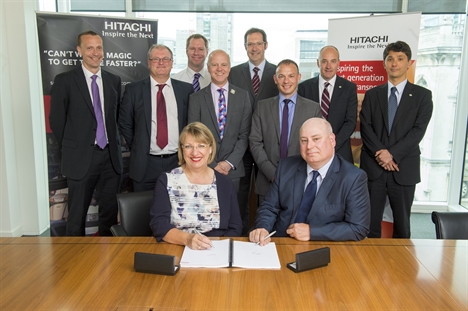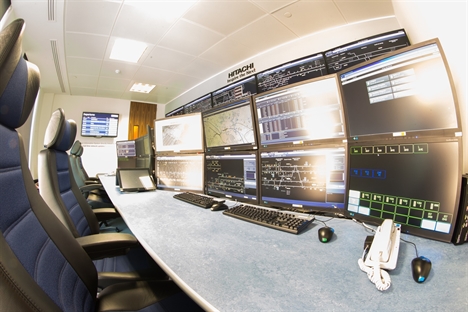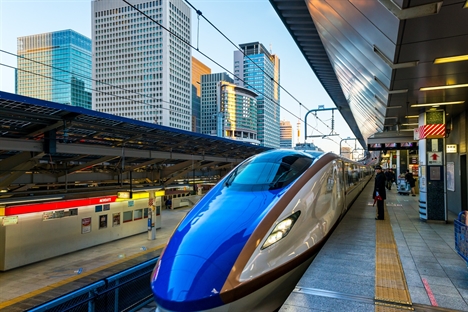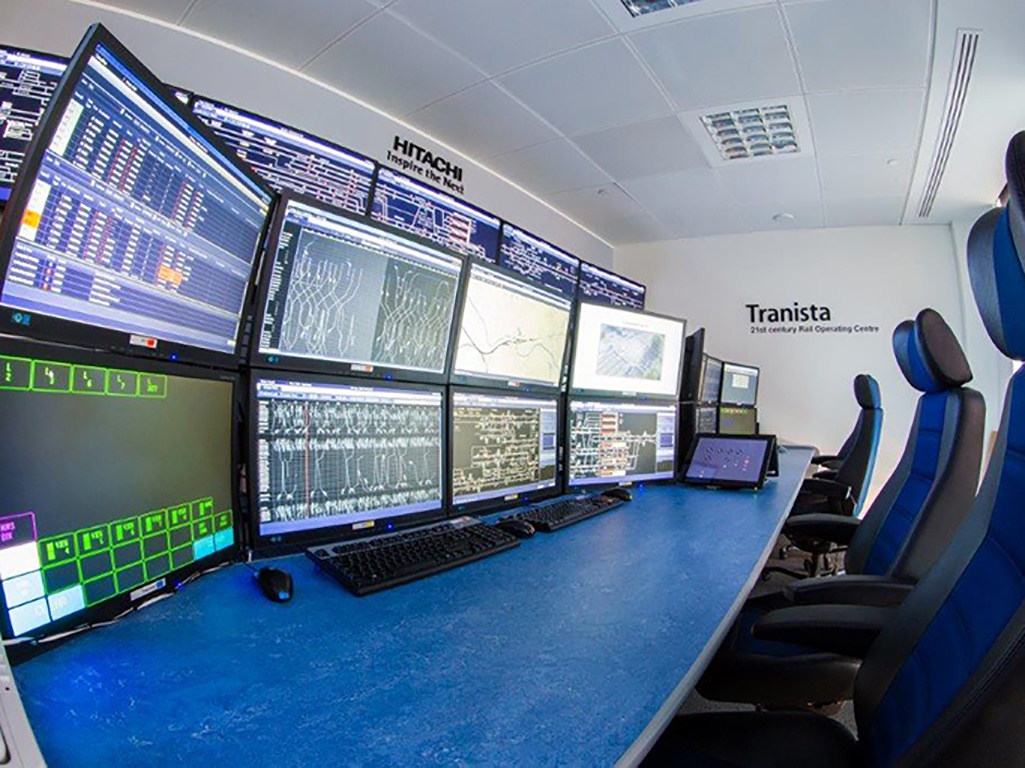01.08.15
Traffic management for the Thameslink core
RTM’s Adam Hewitt spoke to the people responsible for delivering traffic management for Thameslink: Hitachi Rail Europe managing director Karen Boswell, Tim Gray from Hitachi-owned TRE, and Network Rail’s Martin Chatfield and Gary Porter.

The accelerated roll-out of traffic management nationally may have been curtailed for now, but on Thameslink things are still progressing at a pace, with Hitachi Rail Europe now confirmed as the contractor to deliver it.
The headline ambition of the current phase of Thameslink upgrades is achieving 24 trains per hour through the core in the peak from St Pancras to Blackfriars from 2018.
This metro-like frequency is achieved by the use of ATO over ETCS – Automatic Train Operation over European Train Control System in-cab signalling – for the new fleet of Siemens-built Class 700 Desiro City EMUs.
Traffic management is not a direct enabler of these high frequencies, but is key to reliability, and will help free-up signallers’ time to use their expertise efficiently, and will also help the system to cope in periods of disruption.
Network Rail’s Martin Chatfield, senior programme manager for Thameslink, ETCS and traffic management, told RTM: “The traffic management system is about making sure that we are flighting the right trains into the core – so we’re not just having 24 trains turning up in the wrong order, and passengers are not aware of which one is next.”
He said increasing capacity and frequency via ATO over ETCS is not enough on its own, as without traffic management the level of service and reliability would not be as good as it could be. “We probably could run 24 trains per hour, but our ability to recover if something went wrong, and our ability to give customers the right information, we realised very early on – four or five years ago – wouldn’t be possible with just ETCS and ATO alone.”
)
Is it necessary?
Gary Porter, project director for Network Rail for traffic management and ETCS, said the necessity for traffic management was raised inside Network Rail. “It’s fair to say Network Rail did ask that question internally as well. Looking at the funding element of this, we needed to be absolutely sure this was essential moving forward, so one of the questions that was asked at a very senior level was whether this could be done without a traffic managing system. Thameslink’s view on that was very adamant: it had to be a traffic management system in some way, shape, or form.”
One of its most important functions is known as plan/re-plan, allowing different options to be simulated and trialled virtually. Chatfield described it ultimately as “an ARS (automatic route setting) system that is then run by the plan/re-plan engine technically; so it would provide the route setting, which takes away the workload for the signaller”.
Karen Boswell, managing director of Hitachi Rail Europe – the former boss of East Coast – was keen to emphasise that the system is more sophisticated than ARS, with decisions analysed and made further in advance than what ARS would be capable of. “That is so important for the end passenger…if it makes those decisions 20 minutes out, it’s then affecting customer information screens,” she said. “It will give a lot more confidence to passenger management in that respect. It’s a much more sophisticated system that will ultimately really assist with that passenger throughput.”
A Network Rail press release amusingly characterised the system as “an omnipotent and computerised Fat Controller”, but Chatfield said: “When things go wrong – that’s when you’ll find traffic management really kicks in and makes a massive difference in terms of the workload for the signallers. It gives them a mass of advice in terms of where they can path trains and what the impact of this would be downstream.”
Delivering traffic management
Tim Gray from TRE (The Railway Engineering Company Ltd) – now wholly owned by Hitachi – said the company would have its main client interface in London, co-located with the Thameslink project team. There will also be an integration facility in Derby, bringing together the engineers the systems from Japan and from the UK. Some of the other systems will be developed at TRE’s Bradford-On-Avon office. “We are mobilising at the moment so we’re looking at where to best put people and the roles that need to be fulfilled to help us deliver,” Gray told us.
The project is being delivered by Hitachi Information Control Systems Europe Ltd, which brings together the capabilities of TRE and Hitachi’s main Information & Telecommunications Systems and Infrastructure Systems divisions, using the Tranista platform.
The main £24m contract is centred on the Thameslink core, but includes options to expand the scope to cover the whole of the Brighton Main Line and part of the East Coast Main Line, Network Rail says.
Boswell said: “We’re immensely proud and privileged that we’ve been awarded this contract. For the teams involved, who have been working on this for some years now, it really is an exciting prospect, as it takes us into a new dimension in terms of delivering real improvements for fare-paying passengers. They’re the ultimate end beneficiary, but along the way it’s going to make a big difference for the people working in control rooms, managing what is happening on a day-to-day basis.”

Hitachi's Tranista traffic management 'model office'
Lessons from Japan
Boswell said Hitachi’s long experience in Japan of delivering and operating traffic management systems – since 1972 in fact – has given it the know-how it needs.

“The volume of passenger flows and the traffic management there is phenomenal. I think we can feel very confident about what it’s going to deliver, particularly in the core of London where we need to make sure we get 24 trains per hour through that core.
“We feel very confident about that, and very privileged too that Network Rail feel confident to award us this contract.”
The national picture
We asked Porter about the curtailment of the accelerated procurement of traffic management nationally. He explained: “Part of the national product was the Thameslink integration as well. Over the last five or six years, we’ve had it as part of the national [procurement], then we’ve had it separate from the national. It’s all really been generated by the timescales in which we need delivery.
“When we curtailed the national programme, it was very key to look at our minimum requirements needed for CP5, and the biggest one was very much the Thameslink requirements. So we felt we needed to get into contract as soon as possible to make sure we met the timescales, which were originally part of a larger national roll-out.”
Hitachi, Thales and SSL have all been involved in the national procurement exercise and the forums. Thales was picked for the initial deployments at Cardiff and Romford ROCs (rail operating centres), while SSL is working on the LINX interface.
Chatfield said: “There will be forums going forward where all three suppliers will share information, share feedback, and get into a position where everyone understands what each other are doing. We try to make sure there is quite a collaborative approach across all three suppliers and we’ve done that a lot with the workscopes building up to this point as well, where all three suppliers work together to build the workscopes initially for some of this work.”
Boswell said: “Technology is all about collaboration. We are absolutely passionate about a ‘one system approach’ in the railway, and that has to be the way forward. We’re very pro-collaboration and pro-relationships, and it’s a hugely complex environment that we are all operating in. The way you make change happen is to make sure your systems and people can work together.”
Alongside the technical transition to the new signalling and traffic management system for Thameslink will be the people change and business change aspects, with plenty of training, shadow running and proving, in Network Rail terminology. “When we’re confident that the system will do what we need it to do, then we’ll bring it into operation,” Chatfield said.
Thameslink Programme director Simon Blanchflower said in a statement: “Traffic management technology will provide extra guidance to our signallers and work with in-cab signalling and automatic train operation to deliver 24 trains per hour between London Blackfriars and St Pancras International. It will also improve the time it takes the railway to recover from delays and deliver enhanced customer information, to improve performance and passengers’ experience of our railway.”

Traffic management functionality for the Thameslink core
• Provides cross-industry information to allow operators to co-ordinate
• Includes interfaces to customer information system DARWIN, to allow the direct update of information
• Interfaces with C-DAS (Connected Driver Advisory System)
• Supplies service information to selected platforms to provide on-station information
• The re-planning system will allow improvement of the timetable and co-ordination of services across London, north to south.